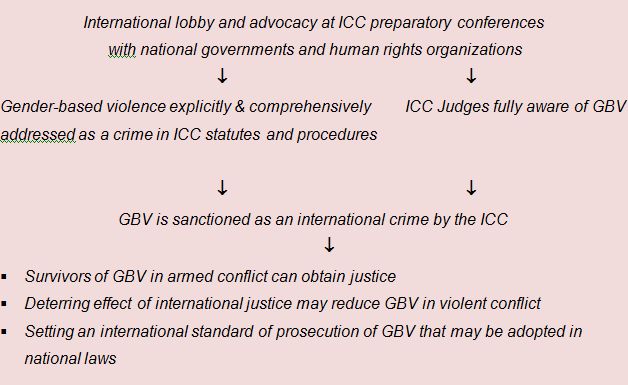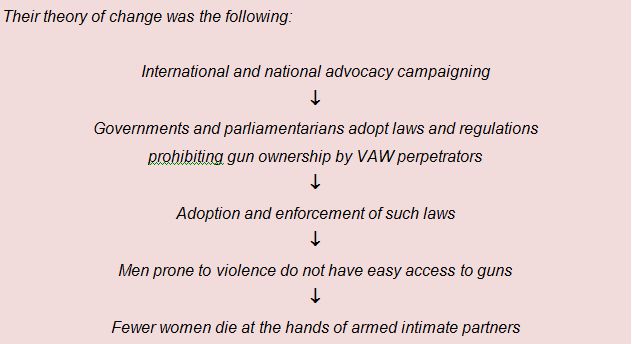Campaigns for change in policy/formal institutional frameworks (e.g. laws, policies, public services) tend to rest on relatively straightforward theories of change, because institutions usually function according to well-known, pre-defined rules. For example, a campaign calling for increased government funding towards support centers for VAW survivors may be based on the idea that government funding provides a stable basis for the support centers - support centers are more likely to deliver quality services to VAW survivors - VAW survivors are more likely to recover from their ordeal and protect themselves against future violence.
Example: The successful Women’s Caucus for Gender Justice on the International Criminal Court (ICC), formed in 1996, knew that the ICC Statute (Rome Statute) would set the principles and procedures governing international trials of individuals for genocide, crimes against humanity and war crimes. Hence, (i) including issues pertaining to gender-based violence (GBV) into the Rome Statute, the ICC Rules of Evidence and Procedure and the ICC Definition of Crimes, and (ii) ensuring that qualified, deserving candidates including women were appointed as ICC Judges would be effective ways of increasing the chances that gender-based violence in violent conflict were brought before and sanctioned by the ICC.
This theory of change could be visualized as follows:

See the gender justice report cards and other publications on their website.
Source: Communication from Vahida Nainar, former Director of the Women’s Caucus for Gender Justice.
Example: The Disarm Domestic Violence campaign launched by the Women’s Network of IANSA (International Action Network on Small Arms) in 2009 aims to stop gun violence against women by creating an international network of activists that will persuade law makers and governments to adopt laws and regulations that make gun ownership illegal for VAW perpetrators.
